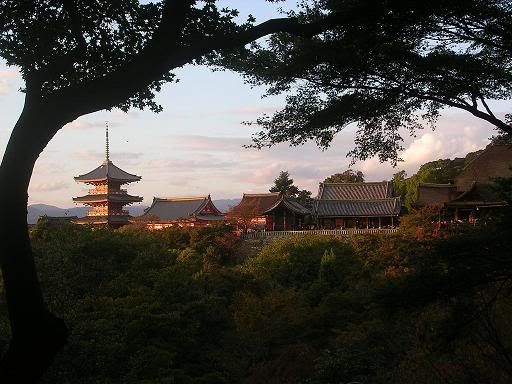
I live on this street (and this is also supposidly the most snow that Makino has seen in 11 years) and I remember being very surprised by the nature of the streets in Japan. For starters, streets in Japan are smaller mainly because Japanese cars in general are smaller and don't need the space. There are also a significantly higher proportion of streets in Japan that are one-way (at least compared to my home country) and the street I live on is one of them. There are also several alleyways that are just barely large enough for a small Japanese car but see a great deal of traffic (I ride home on one of them). And most importantly, most streets in Japan either do not have any sidewalk at all or have a sidewalk that is so old and ridden with potholes that it makes it exceedingly difficult for a person in a wheelchair to manuver. As you can see from the picture, my street doesn't even have any noticeable bicycle lane and stairs leading into each of the houses open right into the street. Absolutely no handicap accessiblity. I think about these kinds of things because my older sister has been in a wheelchair for as long as I can remember and things like handicap accessibility have been drilled into my head since day one. I remember thinking "how does the disabled community (of which I'm sure Japan has one) manage in these conditions?" And you know, I haven't found an answer yet because I certainly haven't seen anyone in a wheelchair around Makino. But I'm sure they are there; they must be.

This is Kiyomizu-dera where I had my very first experience with a temple in Japan. I went on the Kyoto Tour during Orientation Week at Kansai Gaidai University and liked it enough that I went back a second time in November. This picture is from the second visit, but I remember what I thought of the first visit very well. I remember wondering if temples tend to be up the mountain or if that was just Kiyomizu. Further investigation during the previous semester has proven this theory to be fairly true not only for temples but also for shrines. Kiyomizu-dera inspired two initial thoughts about Japan. The first was the reinforcement of the lack of handicap accessibility, and the second was that Japan seems to have an awfully large amount of their land devoted to religion in a place where I was told most people don't really follow a religion and was in significant need of space due to overcrowding. I found out later that one of the reasons for the handicap accessibility in what you would think were the most public of places was because Japan has had a long tradition of (mainly shinto) beliefs that said that illness, ailment, and other handicaps were an impurity and thus had to be kept away from ritually pure places (i.e. all shrines and temples and some other public places as well). This would come from the class on Shinto that Dr. Elizabeth Kenney teaches. I also found out through other classes at Kansai Gaidai that in general the Japanese are proud of their history and seek to preserve it. This explains the unusual amount of space still devoted to temples, particularly in Kyoto and Nara, and the huge amount of land devoted to the Hiroshima Peace Park. Perhaps one of the most interesting things about Japan is exactly what history actually gets preserved, but that's another post for another time...

I shall now end with probably my most memorable impression of Japan. I am staying with the same host family as last semester and though I love them dearly, sometimes they worry me in the same way I’m sure I worry them. This photo is of one of those times. Not but maybe two weeks before this photo was taken, I had gone to Hiroshima and Miyajima. At Miyajima, the tide was just right so that if you walked along the shore, you would find all sorts of interesting sea things (hermit crabs, fish, seaweed, shells…). I am from a state that is a good two day’s drive from the ocean. On the very rare occasion that my mother and I do go to the ocean, my mother disappears for a day and I find her at about sunset with buckets upon buckets of seashells that she’s picked up. So, I looked down at my feet, noticed that the seashells at Miyajima were purple, and thought of my mother. I’ve never seen purple seashells before so I picked up a whole bunch, did exactly what I probably should not have and brought them back to the house, washed and dried them, and put them in a container, telling my bewildered host mother and host sisters that it was going to be a Christmas present for my mother and why. So, on this particular day about two weeks later, we’re having our usual dinner of a traditional Japanese dish and miso soup. So my host mother hands me my miso soup, and I hear something clinking around and wonder “what is in my miso soup??” So I looked and… it’s seashells... with purple inside them. No wonder my host mother thought I’d lost my mind, and of course I sat there for a moment and wondered if she lost hers. I did eat what was in my soup though.
So after a semester of living in Japan, those are my most memorable "first" impressions. Japan is a very different and interesting world from my home country and I’m looking forward to another semester of being surprised by this country I currently live in.
2 comments:
You are off to a good start with nice photos and text. You bring up many interesting and important topics. I will let Kenney sensei deal with the religion stuff...
As for handicap accessibility, you will find that Japan is slowly catching up, really out of necessity. With the aging population comes the need for more elevators and wheel chair friendly accommodations. Just today there was a woman in a wheelchair on the bus. The driver had to get out off his seat and install a portable ramp before she could get on (with the assistance of her caretaker). Same thing when she got off the bus. I have seen train station attendants and other people carry people in wheelchairs up and down stairs. With a recent change in social welfare, more and more handicapped people are out and about. But again the biggest changes are occurring because of old people.
Making the temples and shrines wheelchair friendly... that will be tough. I do know that Tenrikyo, for example, has an elevator and makes it easy for wheelchairs to get around in their main sanctuary.
You are an anthro major, right? I suspect your greatest challenge in the blog will be limiting your text and being pithy. I am surely not a good model to follow. But bloggers realize that most people can't handle a lot of text. How do we choose what to include when everything is abundant and important? I don't know... Somehow, for this course, we have to learn to let the photos do some of the talking for us. Anyway, I look forward to your future posts.
Please enable anonymous comments.
-scf
Thanks for featuring me in the blog!
Sarah
Post a Comment